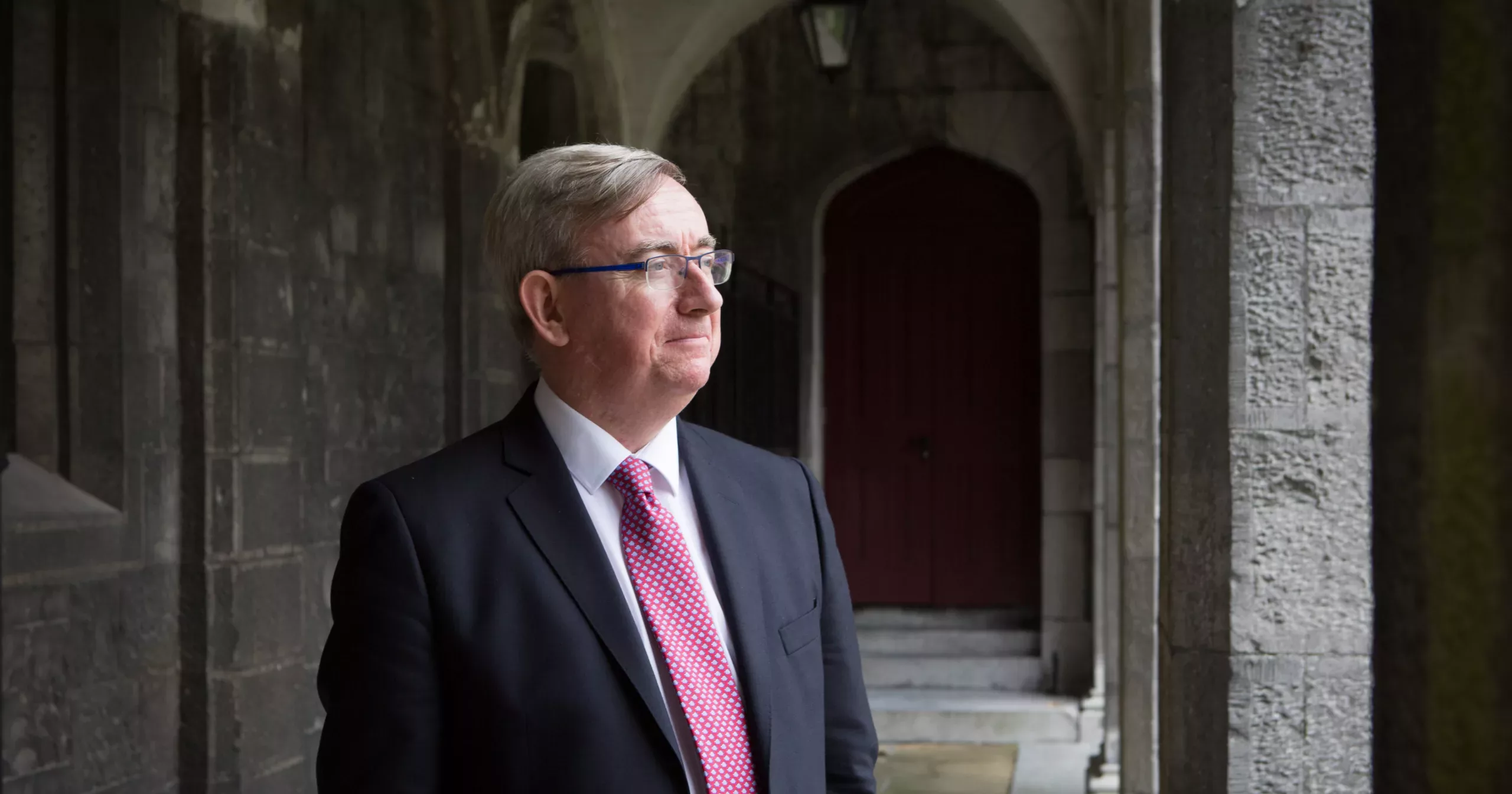
Fáilte go Cois Coiribe. Tá sé lán go béal arís i mbliana le luachanna na hollscoile s’againne, luachanna atá go smior inár gcomhluadar.
I am particularly pleased that, once more, Cois Coiribe is replete with our values as a university community, as a university for the public good.
Our alumni awardees featured here make our mission manifest. The common thread which runs through the fabric of the awards is of lives lived for the public good. Public service broadcasting, public advocacy, public health and wellbeing, public service for peacekeeping and security, work in public universities for teaching, research and student wellbeing, including through sport. We are proud of them all.
Other contributions to this issue, as in other issues, also reflect our openness to the world as a university with no gates. Work with industry on thought leadership, sustainability and innovation, work with civic society on social enterprise and sport.
In Ollscoil na Gaillimhe/University of Galway, we also look to the future, beyond the horizon, to see what’s on the other side. Here we explore the terrain of new ways of working, new ways of energy generation, and new ways of thinking about climate and climate change.
We also reflect on the past, remembering 50 years of the MBA. When I spoke at the event in our Aula Maxima to celebrate the 50th anniversary of our MBA, I noted the importance of the people who—50 years ago—had the vision to imagine and implement an MBA in the early 1970s. Many of them taught me when I was here on the BComm in the 1980s and I remember them still. Teaching matters; we remember the good teachers who influenced and encouraged us to step into the life of the mind.
Also reflecting on the past as future, I started this introductory piece with our alumni awardees. The day of the awards was 16 June, Bloomsday. In my remarks on the night, I considered quoting from Joyce’s poem, “She Weeps over Rahoon” (‘Rain on Rahoon falls softly, softly falling’) but thought the better of it for a celebratory Summer evening.
Then I came across the book on Joyce written by Ray Burke one of our awardees this year, titled Joyce County: Galway and James Joyce (Artisan House, 2021); in the words of another of our illustrious Galway graduates, President Michael D. Higgins, ‘a brilliant book’.
In it, Burke mentions that while living in Ireland, after Dublin, Joyce visited Galway the most, given that Nora Barnacle was a Galway woman. In the book, Ray writes (p.17), referring to “She Weeps over Rahoon”:
In the poem, which Joyce wrote in Trieste shortly after his 1912 visit to Galway, Nora Barnacle is imagined standing beside him in Rahoon Cemetery mourning at Michael Bodkin’s grave. The poem was not published until 1927, when Joyce released the autobiographical collection Pomes Penyeach in Paris. He sent a copy of a special limited edition of the collection, with what he called ‘extremely beautiful’ decorative lettering designed and illustrated by his daughter Lucia, to the library of [then] University College Galway (UCG) … in 1935. In a handwritten covering letter to the college librarian, John Howley, he said that the national libraries in London and Paris already had copies and he added:
I wished to offer a copy to your library not only because the designer of the lettrines is a grand-daughter of your city and the writer of these verses bears one of its tribal names, but also as a small acknowledgement of a great debt of gratitude to Mr [Michael] Healy himself for his kindness and courtesy during so many years.
Kindness and courtesy was alive and well in Galway even then. And we were in good company with London and Paris even then too!
Ray continues (p. 18):
Joyce explained to Lucia in a letter written in Italian (the usual language of their correspondence):
After the departure of Mama’s uncle [Michael Healy] from Dublin I wanted to make him a present. Knowing he would never accept money I bought one of the last copies of Pomes Penyeach still extant and I presented it in our name (that is, yours and mine) to the library of the University of Galway [biblioteca dell’Universita di Galway], as you are a grandchild of that ancient city and I am a descendant of one of its tribes.
In 1935, James Joyce, genius that he was, coined the name ‘University of Galway’ before we had ever dreamt of it!
The special limited edition of Joyce’s poetry, illustrated by a grandchild of our ancient city, remains in our special collections archive today as a representation of the continuity and change of this place, our resilient innovation, cois Coiribe.